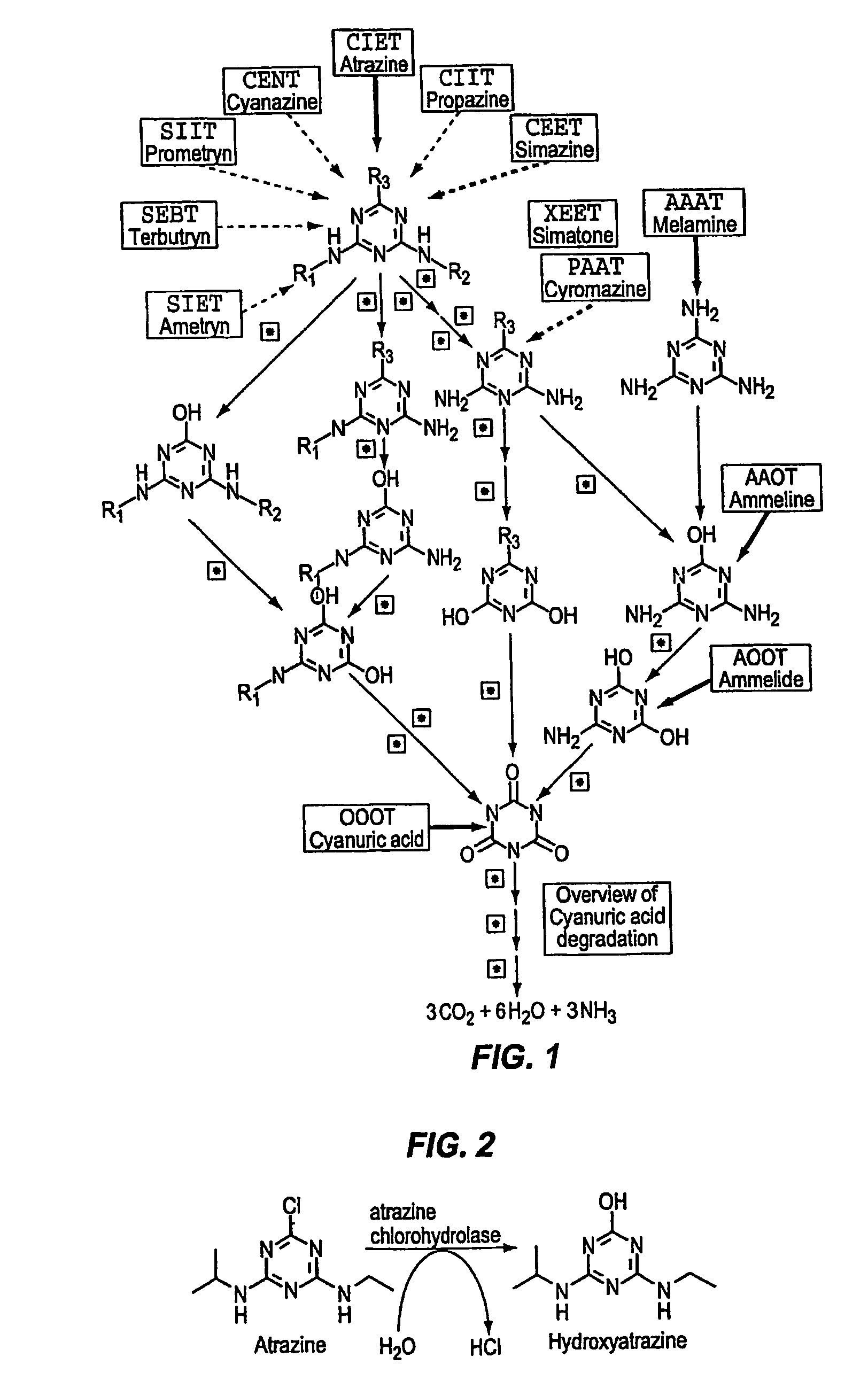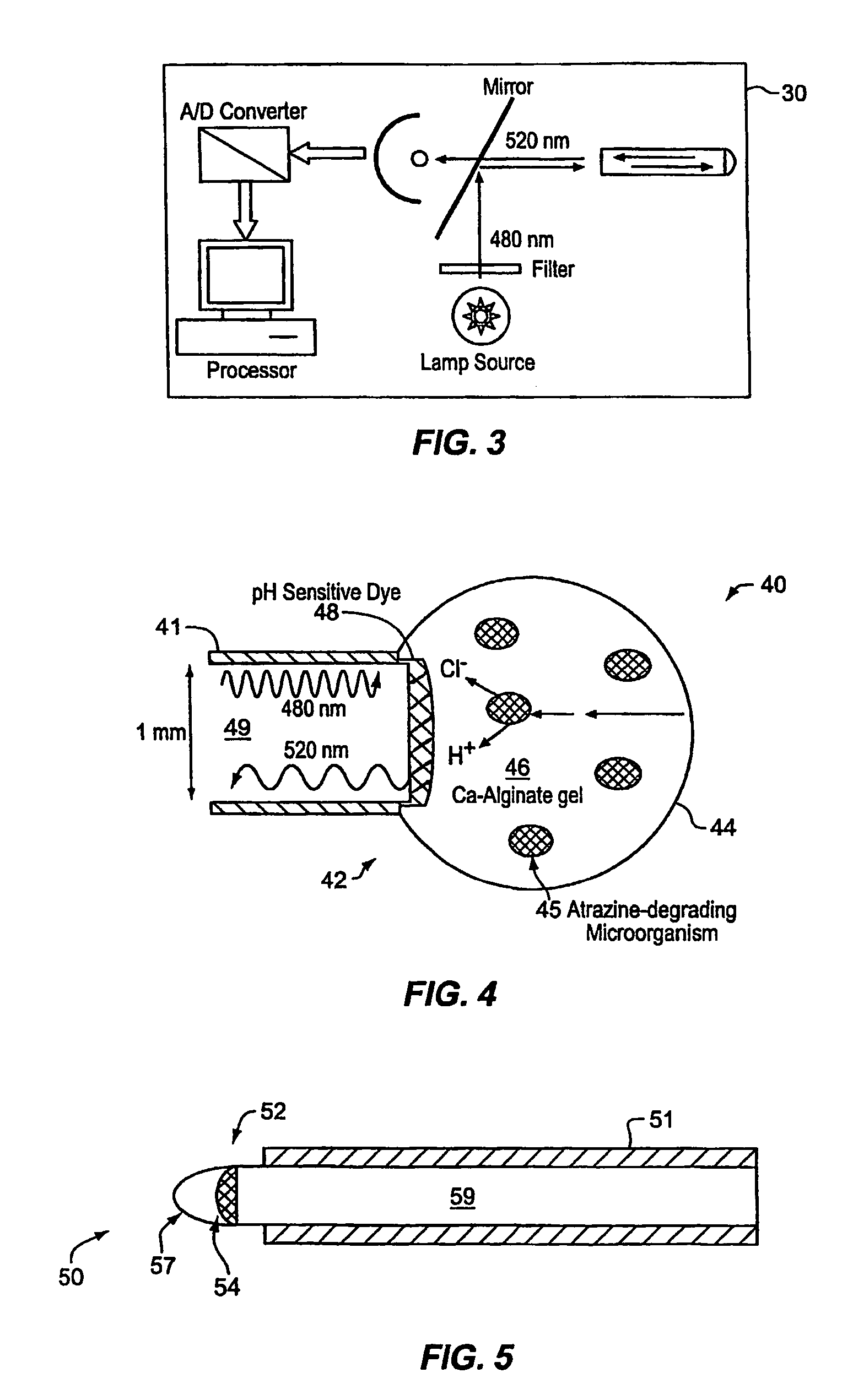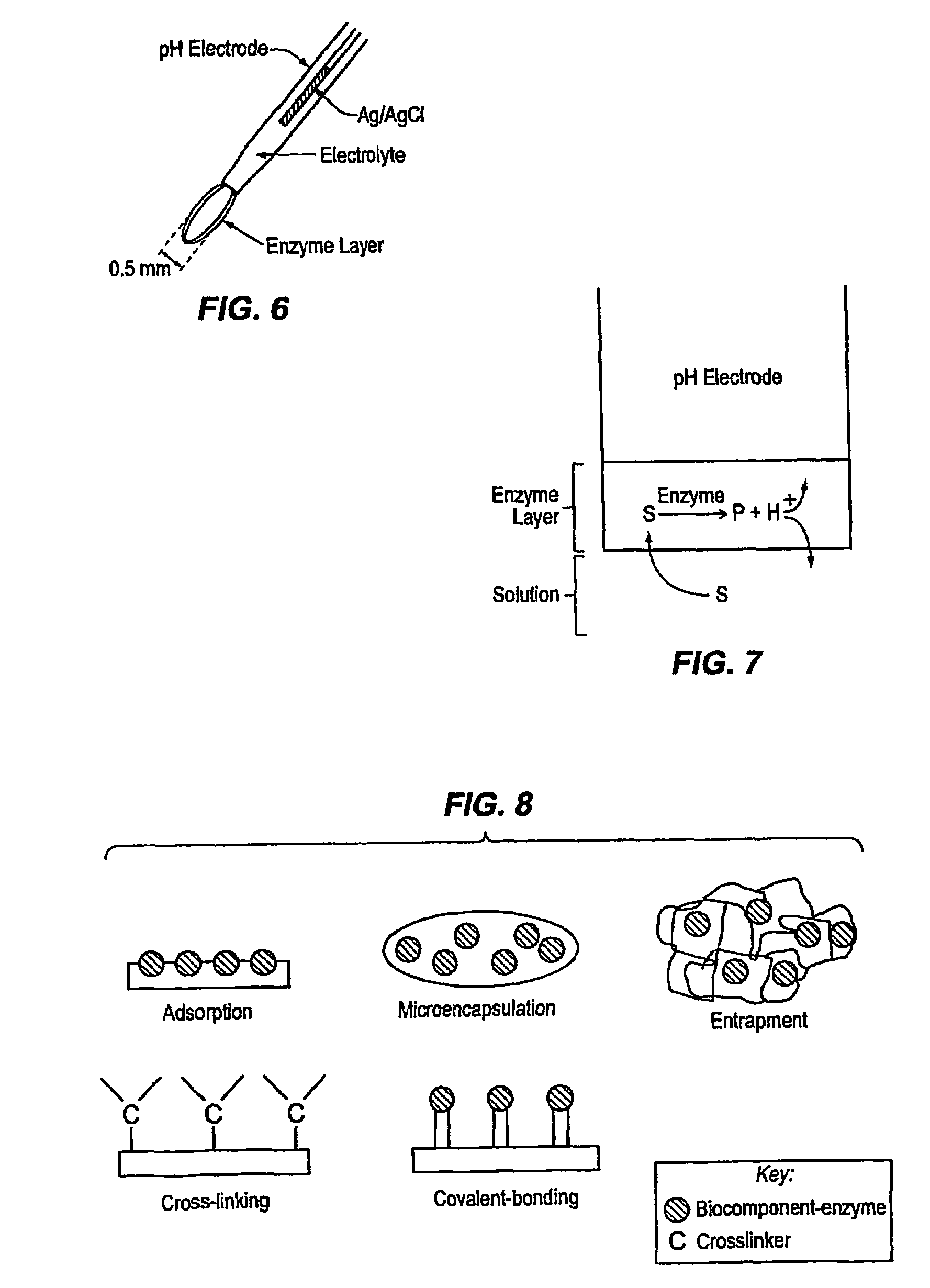Optical biosensor with enhanced activity retention for detection of halogenated organic compounds
a biosensor and enhanced activity technology, applied in the field of optical biosensors with enhanced activity retention for detection of halogenated organic compounds, can solve the problems of long response time, high cost, and use of immunoassay kits which can be quite inaccurate, and achieve the effect of reducing fabrication costs and robust distal tip design
- Summary
- Abstract
- Description
- Claims
- Application Information
AI Technical Summary
Benefits of technology
Problems solved by technology
Method used
Image
Examples
example 1
[0058]Biosensor employing pH optode with biocomponent, dehalogenase carried by whole cells immobilized by gel entrapment (for reference, see FIGS. 3 and 4). Distal tip section was coupled to a 1-m long polymethylmethacrylate (PMMA) fiber optic cable. Cells stored at 4° C. in phosphate-buffered saline were centrifuged at 15,000×g for 2 min.; the pellet was then washed twice with saline (9 g / L of NaCl [pH 7.1]) containing 50 μg / mL of chloramphenicol. Next, sodium-alginate (4% w / v in water) containing about 100 μg / mL of chloramphenicol was added and mixed well with the cell pellet. This cell—alginate mixture was kept for 5 minutes at room temperature before it was used to make the biosensor. The cell-alginate mixture was stirred well with a pipette tip and a small drop of gel was carefully deposited on the tip of the pH optode. The tip was dipped into an ice-cold solution of 7% (w / v) of CaCl2.2H2O for 15 minutes. When exposed to Ca+2 ions, a cross-linking network was formed by the bond...
example 2
[0059]The alginate bead was coated with poly-L-lysine (PLL). First, a biosensor was prepared with microorganism strain ADP. The Ca—alginate bead on the biosensor tip (nearly 1 mm) was washed twice with saline solution (9 g / L of NaCl in water). The biosensor tip was immersed in 10 mL of 0.4% (w / v) of poly-L-lysine. HCl solution in saline for 30 min. at 30° C. In order to remove unreacted PLL from the bead surface, tip was washed with saline solution.
example 3
[0060]Two microorganisms suitable for use in degrading atrazine are Pseudomonas sp. strain ADP and Clavibacter michiganese ATZ1. Studies have shown that strain ADP has three genes (atz-A, atz-B and atz-C) that encode enzymes responsible for the degradation of atrazine to cyanuric acid. Strain ATZ1 has 100% homology only with atz-A; and thus only carries out reactions similar to the first two steps of strain ADP. For further reference, see tables below:
[0061]
TABLE 8.1Physical methods used to design a biosensorPHYSICALOptical transduction: fluorescent dyeTRANSDUCERIMMOBILIZATIONEntrapment: Ca-alginate gel matrix, timeMETHODof gelation = 20 minutesBIOCOMPONENTWhole cell of atrazine degrading strain: treatedunder various conditionsSTABILIZATIONStorage in refrigerator at 4° C.METHODSIZELess than 2 mm diameter of immobilized gel: celldensity ~1 g of wet wt. of cells / wt. of alginate
[0062]
TABLE 8.2Summary of sensitivity parameters for the biosensorResponse Time(90% of responseReproducibilit...
PUM
| Property | Measurement | Unit |
|---|---|---|
| Current | aaaaa | aaaaa |
| Fraction | aaaaa | aaaaa |
| Fraction | aaaaa | aaaaa |
Abstract
Description
Claims
Application Information
 Login to View More
Login to View More - R&D
- Intellectual Property
- Life Sciences
- Materials
- Tech Scout
- Unparalleled Data Quality
- Higher Quality Content
- 60% Fewer Hallucinations
Browse by: Latest US Patents, China's latest patents, Technical Efficacy Thesaurus, Application Domain, Technology Topic, Popular Technical Reports.
© 2025 PatSnap. All rights reserved.Legal|Privacy policy|Modern Slavery Act Transparency Statement|Sitemap|About US| Contact US: help@patsnap.com



